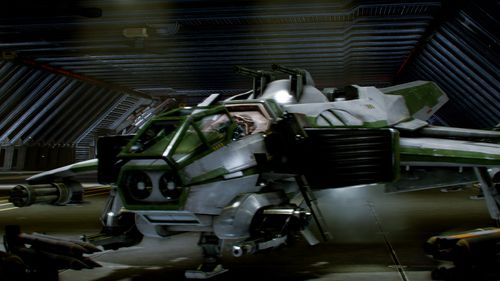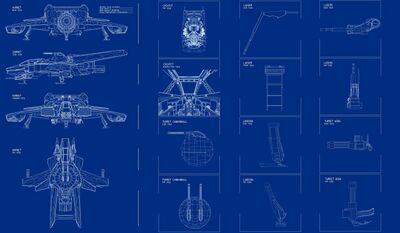 | |||||||||||
| Engineering - Ship Components Systems | |||||||||||
|---|---|---|---|---|---|---|---|---|---|---|---|
| Series | One-off | ||||||||||
| Type | Engineering | ||||||||||
| ID | 12936 | ||||||||||
| Published | 2013-03-26 | ||||||||||
| Source | Engineering - Ship Components Systems | ||||||||||
| In the series | |||||||||||
| |||||||||||
Ships are the heart of Star Citizen and your personal ship will be the heart of your Star Citizen experience. It will be your home, your mode of transportation, your line of defense against pirates, Vanduul raiders and the dangers of vacuum itself… and what’s more, it will be an expression of your personal style and gameplay preferences. Every sci-fi fan has dreamed about customizing their own Millennium Falcon or manning the stations on their own bridge of the USS Enterprise, blasting off on adventures in space against evil empires and mysterious aliens. These fantasies are at the heart of our ship customization system: when you build a ship, we want you to feel like that ship is yours; that it’s not just a carbon copy of every other Aurora or Freelancer that you encounter. You will have a sense of pride when you pilot your craft, knowing that while there may be many like it this one is your own, unique in the universe.
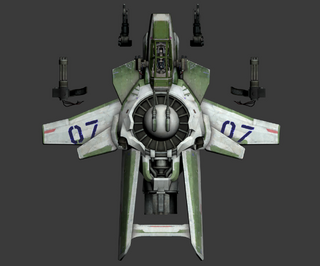
To accomplish this, we’ve spent a lot of time drilling down from the initial ship document that we released during the crowdfunding campaign. We’ve been working out what makes up a ship, how ships can be upgraded and how they balance against each other. There’s still a lot of work to do, but we’re far enough along that we wanted give you a glimpse into how these systems work.
Combat in Star Citizen is fast paced and dependent on player skill. There is no auto-attack or random dice rolling and pilots will not be able to buy their way to victory. One of the most important rules to remember is that the most expensive parts may not be the right tool for the job, and that even the most decked-out ship can be bested by a skilled pilot in a lesser craft. Our job was to create a system that honored this promise: one where upgrades meant building a ship that speaks to your personal preferences rather than one that’s simply the acknowledged all-around best option.
What we decided was that this style of play demands a different approach to items. You won’t necessarily find that “level 2” laser cannons are objectively better than “level 1” laser cannons. In fact, you won’t find the word level anywhere in the game – except maybe next to an elevator shaft. One of the benefits to this is that there is absolutely no level scaling. All the items in the game are there for a reason. They fill a role, and accomplish a specific task. In many ways, our equipment system has a lot more in common with legendary table top battle simulations than it has with modern fantasy MMOs.
That’s not to say every laser cannon is the same or every neutron gun is equivalent. There are going to be different grades of equipment. As in real life, some companies will provide very basic versions cheaply, while others will provide expertly designed and constructed versions that are harder to come by. You make the choice between the affordable, readily available SpaceMart laser that may break down more, generate more heat and be less efficient… or the hand-constructed German-engineered version from a master weapons builder that will set you back a stack of credits in return for an especially reliable, efficient gun. (And you don’t even want to know how the laser cannons built by Joker could end up working!)
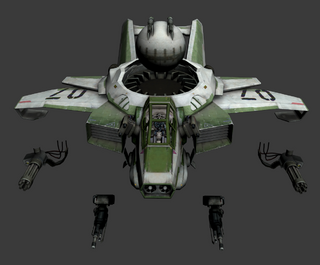
What this all boils down to is that at its core, ship modification is a game of resource management where players will juggle space requirements, power consumption, heat load, signature, mass, CPU resources, durability and the cost and availability of parts. We’ve created a system that allows you to manage all of these individual pieces in intricate detail, but also build a unified whole that will behave the way you want it to without micromanagement during the actual combat.
We should also note that it is our intention to make all of this optional. The great challenge of game design is building something that is easy to pick up but difficult to master. You never NEED to drill down this deep to enjoy Star Citizen. If you’re itching to get out there and fight or explore or trade, grab a factory model, add the few parts that you absolutely need, and head for the stars. If you’d rather control every aspect of your ship’s functions and tweak every element of its performance until it’s just right for you, then we’re giving you that option here! As with everything else in Star Citizen, choice is the watchword: you play how you want, and we just supply the tools. We believe that many of our users will be interested in this system since so many of you build and tweak your own PCs… and doing the same for your starships feels like a natural next step! What makes up a ship?
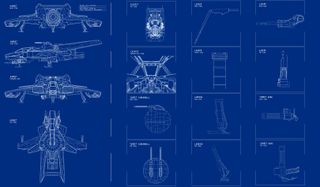
Here’s a look at some of the hardpoints and equipment that make up the ships of Star Citizen
- Hull: Hull is where you can mount additional armor for protection, reduce your mass for better handling or modify your cross-section to limit your signature.
- Power Plant: Power Plants supply the power that the rest of your ship will consume. It’s the foundation on which all other systems function.
- Avionics: If the Power Plant is the heart of your ship, the avionics are the brain. Avionics calculate the advanced math required for the maneuvering thrusters, track and identify targets, and automatically route power and ensure functional life support. It is unique among systems in that it can also be upgraded with additional systems such as ITTS, better turret AI and a myriad of other options.
- Afterburners: Give a significant boost to thrust at the cost of expelling fuel inefficiently.
- Shield Generators: Protect the ship from spaceborne debris and hostile fire. Generators come in multiple sizes, and have varying levels of segmentation (single ‘bubble’, front/back, quadrant, etc.)
- Intake: Allows you to scoop free hydrogen in the vacuum of space or in the extreme upper atmosphere of gas giants to refill your working mass tank.
- Fuel Tank: The fuel tanks deliver mass in the form of hydrogen to the power plant, which in turn delivers energy to supercharge the fuel and expel it at speed. If you run out far from civilized space, you better hope you have Triple A! (Your computer will warn you when you reach ‘bingo fuel’ – the point of no return after which you will not be able to reach a friendly base.)
- Maneuvering Thrusters: Maneuvering thrusters are small thrusters that provide the majority of the pitch, roll and yaw control as well as correcting the ship’s velocity vector to be in the direction it’s pointing (if the IFCS is on). These can either be fixed in place, or have varying methods of articulation to improve control response.
- Main Thrusters: These provide the bulk of the forward thrust of a ship. Like maneuvering thrusters these can also be fixed in place or have thrust vectoring assist with the directional control of the craft. Articulated thrusters require more robust avionics.
- Miscellaneous: Weapon batteries to assist the recharge function of the energy weapons, ammo racks to store more ballistic ammunition, additional cooling systems to purge heat load, devices to hide your cargo, the list goes on and on…
- Class 1 Weapon: Forward-fixed weapons that can mount larger weapon systems.
- Class 2 Weapon: Gimbal-mounted weapons that have limited pivot in a fixed direction. The increased cone of fire comes at the cost of smaller weapon size.
- Class 3 Hardpoint: Class 3 hardpoints can mount a variety of underbelly gear such as missile racks or extra fuel tanks.
- Class 4 Hardpoint: Generally used to mount turrets, some ships can also use these hardpoints for increased cargo space and other ships systems.
Resource Management

Space
We’re not talking about stars here, we’re looking at the space your ship has for upgrades. In this sense, space comes in two flavors. First, the ship must have the appropriate hardpoint for an item, and second that hardpoint must have the capacity for the item. Larger items generally add more mass to the ship than smaller items, and that will impact your performance in certain ways.
Power and Heat Load

Power Plants are the beating heart of the ship. Without power the ship (and likely the pilot) is dead in space. Power is at a premium, and pilots will find that they never seem to have enough to go around. With this in mind, will you opt to use your available power to install a more powerful weapon, or will you use it to power a larger set of thrusters?
Consuming power also generates heat that must be dispersed from a ship—much like a modern high-performance PC. If the ship can’t cool itself, it begins to damage its components. Wise pilots will install more cooling than the minimum provided by the hull to handle unforeseen heat spikes like those that might occur in battle or because of damaged components. Signature
All ships generate an electromagnetic signature and reflect electromagnetic waves focused in their direction. These signatures are used by the avionics system to identify and track targets within its operational range. Power hungry ships will generate a much stronger EM signature while ships with minimal consumption may slip by unnoticed. Large ships reflect more radar waves back to active scanning units by virtue of their cross-sections. These signatures are also used by guided weapons to lock and navigate to their target. Signature is the primary concern for players wishing to maximize their stealth or avoid missile lock.
Mass
Mass is an important factor in determining the speed and maneuverability of your ship. As your mass goes up, your ability to rapidly change direction goes down. This stat is of primary concern for pilots who wish to maximize their speed and maneuverability.
CPU

Running the components of the ship requires advanced circuitry and highly specialized software, all of which are grouped together under the ship’s avionics system. These ‘packages’ offer more robust target identification, increased radar range, ITTS, and many other functions. In addition, other ship systems require data resources for proper operation. Examples include operation of the gimbal-mounted class 2 weapons and the AI systems for unmanned turrets.
Durability
How resilient a part is to damage will be of prime importance to pilots who expect to operate in hostile conditions. A high-output power plant is useless if it stops working with only minimal wear, or succumbs to the first laser bolt that finds its way through the shields to the hull.
Cost and Availability
Every part in the game has a cost in credits that must be paid to purchase it, but just having the money isn’t enough. Not all parts are available everywhere, and even the locations that normally sell certain items can be out of stock if the supply chain to the factory has been disrupted. Players will need to travel far and wide to locate all the parts they wish to install.
Performance Tuning
Tinkering with your ship is of huge interest to many people. We see this in the real world: there are huge communities around PC overclocking and in hobbyist automotive tuning on the weekends. People just like knowing that they’ve squeezed every last drop of performance out of their gear. We know you’ll want to push your ship to the limit (or maybe just baaaarely past it) so we are including systems to let you try. Parts are manufactured within tolerances, and while every part that rolls off the line will function precisely to its rated value, its true capability can be discovered by players willing to risk the consequences of failure. Pushing hardware past its rated specifications can have disastrous results though, and even successfully tuned parts will likely be more power hungry and generate a larger signature!
What you’re doing is “overclocking” your weapons and modules, just like dedicated PC enthusiasts do to their CPUs! When Intel builds a chip it often (but not always!) has the capacity for a higher clock speed… and people who want to push their rigs to the limit will manually tweak their CPUs higher and higher. Those tolerances aren’t known, though: sometimes a laser might get a 10% boost… rarer a 20% boost… and other times you might cause your overclocked gun to just generate excessive heat… or even damage itself! We anticipate some players will make a living overclocking upgrades and selling them to others at a premium… it’s our equivalent of an MMO crafting system without the artificial “leveling” mechanic taking you out of the game.

Item Quality
Just like there are a myriad of .45 handgun producers in the real world, there are many companies that produce equivalent items in the Star Citizen universe. Not all gear is created equal, however. Some manufacturers are known for mass producing cheap gear for pilots on a budget, or for arms dealers supplying localized conflicts. As a rule, cheap gear is generally less efficient, less durable and prone to overheating, but has the advantage of being extremely inexpensive and highly available. The better manufacturers produce more efficient and reliable gear at a premium, with the best components being reserved for UEE Citizens and Military… or aboard yet to be discovered alien derelicts at the fringes of the galaxy!
Some players can just pick up a laser and start shooting while others will spend days on a quest for the PERFECT laser for how they want to work their ship. Let’s say you’re interested in turning your Hornet into a stealth ship. You’re going to buy the lowest-emission modules wherever possible: thinner shields that don’t have such an energy signature, lasers that do less damage but generate less heat… thrusters that don’t accelerate as quickly but better keep you hidden. And then you can go to increasing extremes that involve more and more gameplay: maybe you hear that a company on Terra has a low-emission laser that does more damage that you need to hunt down… or a pirate group on Spider has illegally hacked shields that add a little protection without giving out a higher signature! You’ll travel the galaxy building the perfect ship rather than sitting in one hangar to put it together.
Testing Your Equipment
An important part of this system is that it’s not a rote recipe system; you don’t find the specifications for the perfect laser and work at it until you’re there. As with overclocking a PC or tuning a car there’s always an element of chance – the tweak may fail and leave you with a module in need of repair… and you don’t want to find that out when you’re nose to nose with a pack of pirates! To counteract this, we plan to add an optional suite of testing/burn-in equipment to your hangars, and some extra goodies in your avionics to track performance. Spending a little time and a few credits to run your newly overclocked shields or your maxed out cannons on the ground could end up saving your skin later on in space!

Legality
The UEE Advocacy is part police force and part coast guard and is tasked with enforcing the safety of pilots within UEE space. To accomplish this, they regularly scan ships for contraband or illegal components. Many of the best ship parts are strictly limited to Citizens of the UEE, and others are completely forbidden. Pilots who choose to flout the rules in UEE space will be fined, have their contraband confiscated, or possibly be engaged by the Advocacy in the pursuit of their duties.
Pipes
So that’s all great, but how do the parts work together? We accomplish this with various ‘pipes’ connecting the systems together. The power pipe supplies each device with power, while the data pipe transmits data between components. For example, the shield generator sends data out on the data pipe so the shield level can be displayed on the HUD. Pipes can be disrupted with varying repercussions! We want emergent gameplay to happen in your ship, not just in the larger game world, and a fully interconnected system of ship components allows us to make that happen.
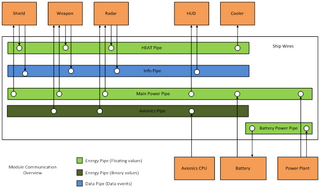
Here’s an example of how the pipe system was initially designed:
All this detail and flexibility is great if you are into it, but what if you just want to strap in and blast off without worrying about how deep the customization system goes? No problem! Customization will allow you to specialize your ship, but you’ll still be able to enjoy the game without tweaking all the nuts and bolts. Not everyone geeks out on the specifics: some just want to have fun blasting aliens and pirates from the cockpits of their space fighters. We’ll definitely be catering to that play style too!
We’re very excited about the direction of the ship upgrades system, and this is just the tip of the iceberg! Stay tuned over the coming months for more details!
